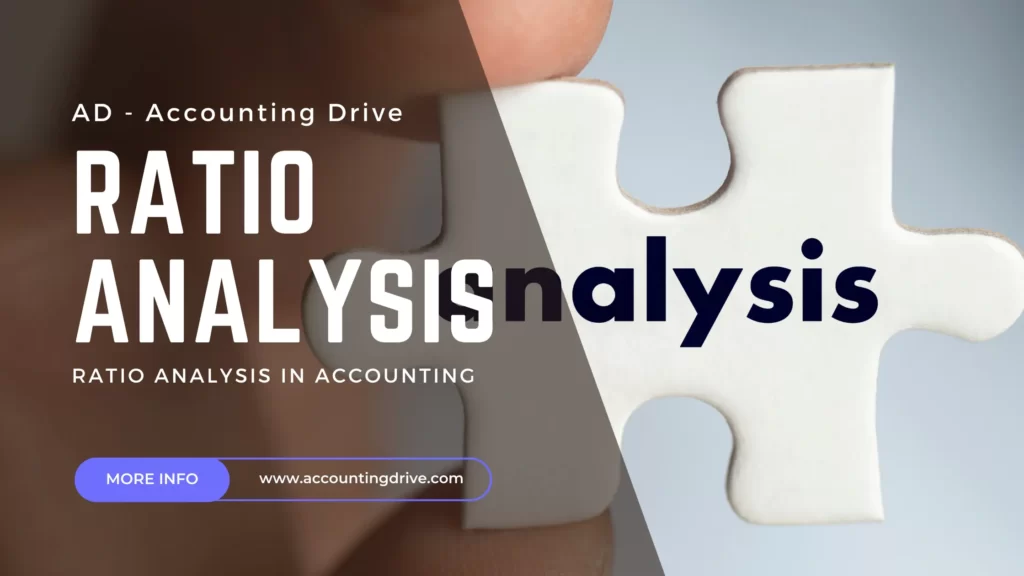Once the company’s financial statements are prepared, Ratio analysis tool is used to analyze the financial position of the company. It is the quantitative method of examining the company’s profitability, operational efficiency, and liquidity with the help of comparing financial statement’s line-items. Ratio analysis is widely used by the analysts and investors to evaluate the investment opportunities within the organization by scrutinizing current and past financial statements. The analysis helps to compare the company’s financial health with other competitive companies by assuming industry benchmarks. In addition to this, ratio analysis helps to analyze the downward and upward trend of the organization.
Furthermore, in order to examine the company’s financial performance in the market with respect to the similar companies, ratio analysis provides a detailed comparison. With the help of this comparison, management could identify the market gap, opportunities, weaknesses and company’s competitive advantage over other companies. Thus, this helps to formulate decision on the basis of solid reasoning to improve the company’s efficiency. The efficiency of the management of liabilities and assets could also be examined by using financial ratios. It also determines the effectiveness of the financial resources: under or over-utilized.
Types of Ratio Analysis
In This Article
ToggleRatios are categorized as follows:
- Liquidity Ratios
- Activity Ratios
- Profitability Ratios
- Leverage Ratios
Ratio | Formula | Explanation |
Liquidity Ratios | Liquidity ratios indicate company’s liquidity position and its ability to pay off its Short-term obligations. | |
Current Assets / Current Liabilities | Current Assets = Cash + Short-term Marketable securities + Account Receivable + Prepaid Expenses + Inventory | |
Quick Ratio | Quick Assets / Current Liabilities | Quick Assets = Cash + Short-term Marketable securities + Account Receivable |
Super Quick Ratio | Cash + Short-term Marketable securities / Current Liabilities | Super Quick Assets = Cash + Short-term Marketable securities |
Activity Ratios | Activity ratios indicate efficiency of how quickly company convert its assets into cash. | |
Net Credit Sales / Average Account Receivables | Average Account Receivables = (Opening A/Receivable + Ending A/Receivable) / 2 | |
Merchandise Inventory Turnover Ratio | Cost of Goods Sold / Average Inventory | Average Inventory = (Opening Inventory + Ending Inventory) / 2 |
Total Assets Turnover Ratio | Cost of Goods Sold / Average Total Assets | Average Assets = (Opening Assets + Ending Assets) / 2 |
Profitability Ratios | Profitability ratios indicate company’s ability to create profit relative to its revenues. | |
Gross Profit Ratio | Gross Profit / Total Net Sales | Net Sales = Total Sales – (Sales Return + Sales discount) |
Operating Ratio | (COGS + Operating Expenses) / Total Net Sales | COGS = Cost Of Goods Sold |
Return on Total Assets (ROA) | Earning After Tax & Interest / Average Total Assets | Average Assets = (Opening Assets + Ending Assets) / 2 |
Return on Investment (ROI) | Net Income / Capital Employed | Capital Employed = Equity + Long Term Liabilities |
Earning Per Share (EPS) | Net Income / Number of Shares | |
Book Value per Share | Ordinary Share Equity / Number of Shares | |
Leverage Ratios | Leverage ratios indicate company’s ability to pay off its Long-term obligations. | |
Debt Equity Ratio | Total Debt / Shareholder Equity | Total Debt = Short Term Debt + Long Term Debt |
Debt to Total Assets | Total Debt / Total Assets | Total Debt = Short Term Debt + Long Term Debt |
Interest Coverage Ratios | EBIT / Interest | EBIT = Earnings Before Interest & Tax |
Calculation
A detailed step by step calculation of the given three ratios including current ratio, trade payable days and trade receivable days has been calculated with the help of assumed numerical data. The analysis will provide an insight about how financial ratios are calculated.
Current Ratio
The current ratio determines the working capital of the company and indicate the company’s ability to pay its debts from its available current assets. Thus, the numerical data for this ratio would include total current assets and total current liabilities. ABC holds Cash $10 million, Marketable securities $10 million, Short-term debt $25 million, Inventory $35 million and the Accounts payables of $15 million.
Ratio Formula
Current Ratio = Current Assets / Current Liabilities
Calculation
Total Current Assets = Cash+ Marketable securities+ Inventory
= 10 million+ 10 million +35 million = $55 million
Total Current Liabilities = Short-term debt+ Accounts payables
= 25 million+ 15 million = $40 million
Current Ratio = $55 million/ $40 million = $1.375
Here, company have enough current assets to pay off its liability.
Trade Payable Days
Trade payable ratio is an efficiency ratio which helps to analyze the company’s average time taken to pay its debts to its creditors. Trade payable days identify the average time period for paying the invoices and outstanding debts. It is recommended that companies should strive to increase its Trade payable days to maximize its cash conversion cycle.
ABC Company made its purchases on the basis of credit purchase. At the end of the fiscal year, ABC Company holds $150,000 as its total credit purchases with the account payable of $10,000 for the current year and $5,000 for the previous year.
Ratio Formula
Accounts payable turnover ratio = Total purchases / Average accounts payable
Trade Payable Days = 365 /Accounts payable turnover ratio
Calculation
Accounts payable turnover ratio = 150,000/ (($10,000+ $5,000)/2) = 30
Trade payable days = 365 /13.33 = 12.16 or 12 days
Trade Receivable Days
Trade receivable ratio is an efficiency ratio which helps to analyze the company’s ability to collect its revenues and determine how efficiently company is utilizing its assets. Trade Receivable days indicates the ability of the company to collect its credit sales from its customers. It is recommended that companies should strive to minimize its Trade Receivable days to maximize its cash conversion cycle.
ABC Company made its sales on the basis of credit sale. At the end of the fiscal year, ABC Company holds $200,000 as its total credit sales with the account receivable of $20,000 for the current year and $10,000 for the previous year.
Ratio Formula
Accounts Receivable Turnover Ratio = Net Credit Sales / Average Accounts Receivable
Trade Receivable days = 365 / Receivable turnover ratio
Calculation
Accounts Receivable Turnover Ratio = $200,000/ (($20,000+ $10,000)/2) = 13.33
Trade Receivable days = 365 /13.33 = 27.37 or 27 days.
Advantages of Ratio Analysis
Ratios analysis provides a valuable insight to examine the company’s financial performance. The advantages of ratio analysis have been discussed in detail below:
- With the help of ratio analysis, the management could evaluate and compare the financial situation of the company and then will become able to disapprove or validate the operating, investment and financing decisions of company.
- With the help of ratios, the manager can covert the complex financial data and financial statement into a simple and identifiable ratio to examine the company’s long-term, solvency, financial efficiency, and operating efficiency.
- With the help of large number of financial reporting data, organizations can obtain the financial performance trend which helps to predict future financial performance and to identify the expected financial turbulence. In addition to this, it pinpoints the problem areas.
- With the help of ratio analysis, organizations can conduct comparison analysis with other competitive organizations to examine fiscal position and market gap in the industry.
Limitations of Ratio Analysis
The limitation of the ratio analysis may include:
- Ratio analysis determines only the quantitative aspects of the organization, while completely ignore the qualitative perspective of the company.
- Due to inflation, there are price level changes. Ratio analysis is based on the historical data analysis which ignore overlooked the price level changes within the given time period.
- Accounting ratios are unable to resolve any financial problem. Thus, fails to provide actual solution for the identified financial gap.
- The comparison between two companies with different diversified product portfolio, different age and size is unable to provide effective comparison. It would be difficult to interpret the result of two substantially different organization under the same box. In addition to this, it is challenging and difficult to identify an effective and adequate industry benchmark comparison standard to compare the company’s ratios.
Key Points
- Ratio analysis tool is used to analyze the financial position of the company
- It is broadly categorized into four main types; Liquidity Ratios, Activity Ratios, Profitability Ratios, & Leverage Ratios.
- Organizations can conduct comparative ratio analysis with other competitive organizations to examine market gap in the industry.
- It tells only the quantitative aspects of the organization, and ignore the qualitative perspective of the company.

